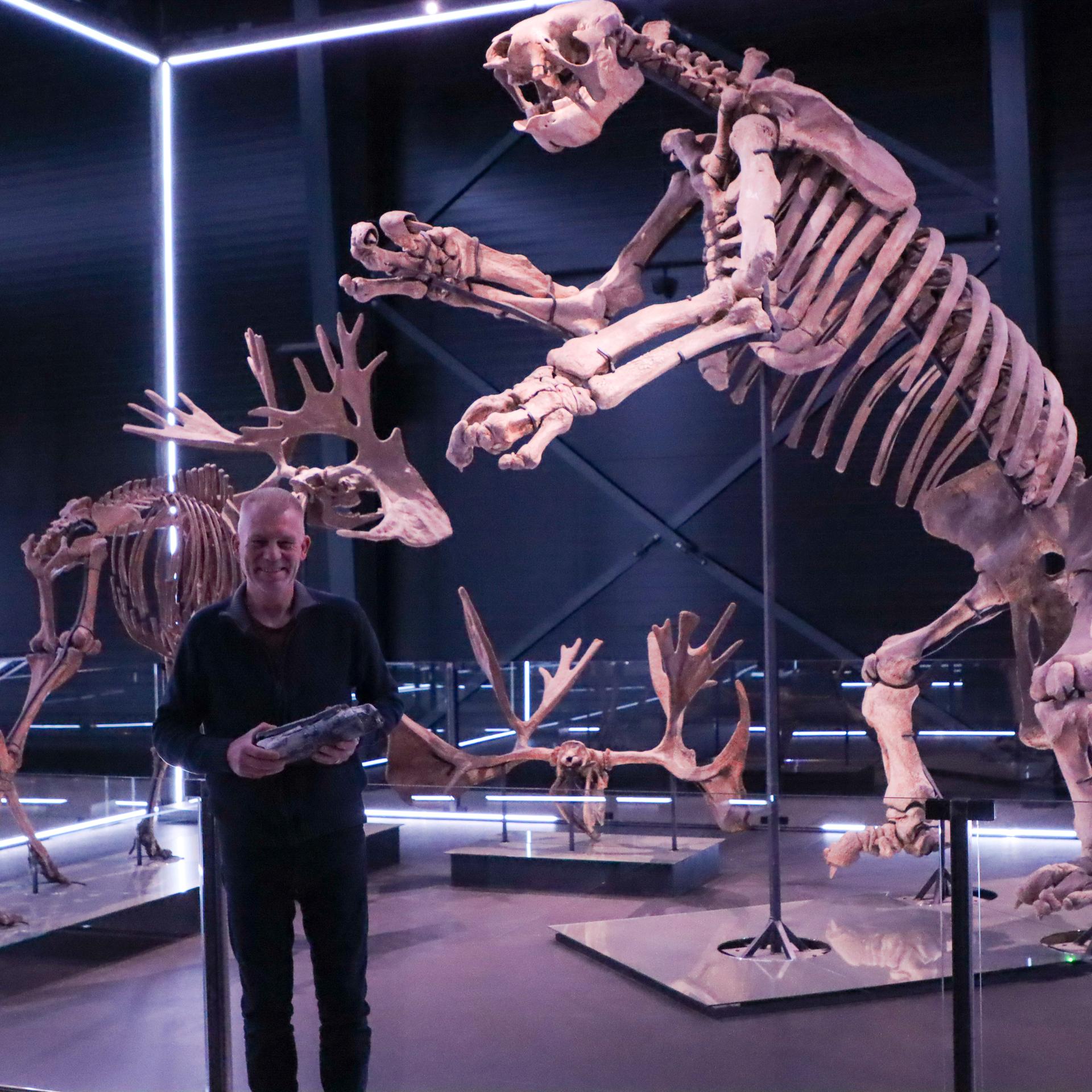November 12, 2024
Local Collector Discovers Mammoth Tooth From the Ice Age on Lolland-Falster

Over 10,000 years have passed since mammoths roamed Denmark, making it exceedingly rare to find remnants of these Ice Age giants on Lolland-Falster.
The discovery was made by local collector Brian Bladt during a walk in the gravel pit at Nr. Vedby Grusgrav. "As they were digging through a pile of gravel, I noticed something that caught my eye. At first, I thought it was a piece of wood or an old post. But then I realized it was something much more special," Brian recalls.
"The first expert who saw it was amazed, her eyes as big as teacups," Brian continues. "She told me this isn’t something you find every day."
This marks only the second time a mammoth fossil has been found on Lolland-Falster. Jesper Milàn, museum curator at Geomuseum Faxe, explains: "A number of teeth and bones from the Ice Age have been found, primarily in Jutland, but this discovery on Lolland-Falster is particularly significant as it confirms that mammoths once roamed this region as well."
He adds, "It’s a fascinating relic from the Ice Age that makes history feel more tangible today. Finding a tooth like this is incredibly exciting."
The mammoth tooth will be exhibited at Knuthenborg alongside other fossils and will be available for viewing starting in March 2025, coinciding with the museum’s season opening. The exhibit will support the narrative of life’s evolution on Earth over millions of years.
Connecting Mammoths to Today’s Wildlife
Christoffer Knuth, owner and director of the Museum of Evolution, comments:
"This discovery gives us incredible insight into the wildlife that once lived here and reminds us of the biodiversity that has existed in our region. It also reinforces the connection between mammoths and the four retired elephants on the Elephant Plains at Knuthenborg, adding even more depth to their story."
Further Insights Into Denmark’s Ice Age History
As part of the Museum of Evolution’s research efforts, the tooth will undergo further analysis to reveal more about its origin. It belongs to an extinct mammoth species that lived during the Ice Age. Researchers aim to determine whether it dates back to a period when Denmark was entirely covered by ice or to a later time of grasslands and fertility.
Fact Box: About Woolly Mammoths
- Woolly mammoths could weigh up to six tons and reach a height of four meters, comparable to an African bull elephant.
- During the Ice Age, the area around Denmark was a hunter-gatherer society with fertile landscapes and diverse wildlife, including large mammals such as mammoths and reindeer.
- Archaeological finds, including bones and tools made from mammoth ivory, show that humans hunted mammoths in this region thousands of years ago.
- Rising sea levels after the Ice Age flooded parts of what we now know as Denmark and Britain, isolating animal species and contributing to the extinction of mammoths.
Assets approved for media use.
Click here